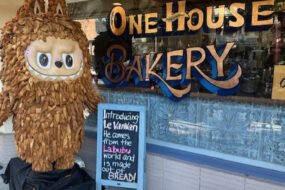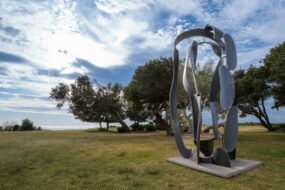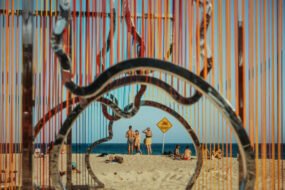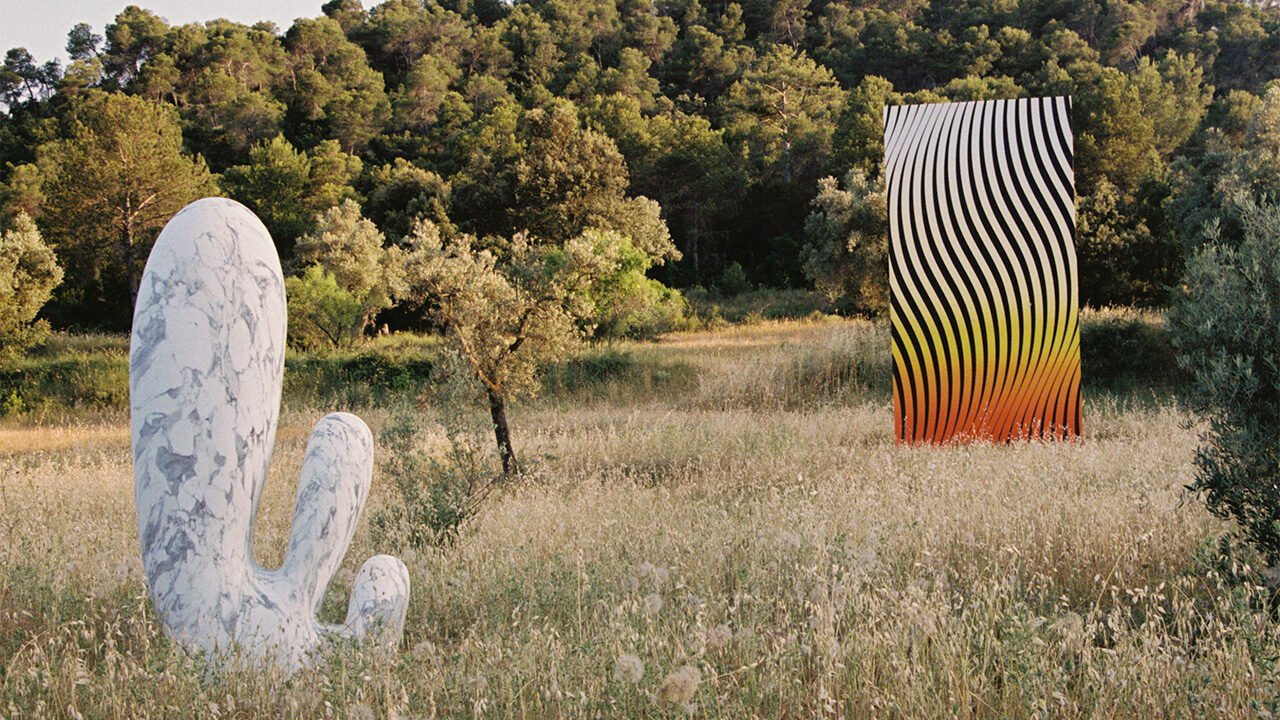
Feathering the brakes of his tractor, a farmer pauses to admire a colourful monolith rising up from an adjoining meadow. A little more than a decade ago, this peaceful valley was an almost forgotten corner of Aragon, an inland region between Catalonia and Valencia, which is one of Spain’s most sparsely populated provinces. Gallerists Christian Bourdais and Eva Albarrán arrived in 2012, bringing with them a far‑reaching vision and a steady flow of international architects and artists in their wake. With new colours and shapes springing up from the fields and forests, the surrounding area has taken a turn towards a very different future.

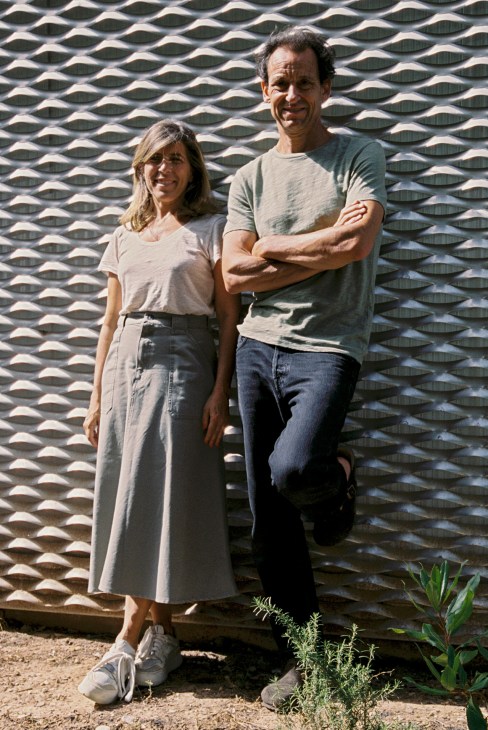
“We moved very slowly,” says Bourdais. He is sitting on the terrace of one of two Solo Houses, which perch on the ridgeline that overlooks his wider estate (to date, this includes more than 200 hectares). “At first, I was rather impatient,” he says, referring to the countryside’s relaxed rhythm. “Thankfully, our slow pace meant that we didn’t make major mistakes. Sometimes, when you go too fast, you lose your way.”
The measured work eventually resulted in two visionary residences. The first, by Chilean architect Pezo von Ellrichshausen, resembles an inverted cube, its private interior patio and pool allowing the exterior to soak in the panoramic foliage. The other house has a circular design and was built by Belgium’s KGDVS studio. Bourdais describes both as legacy homes rather than property developments – edifices that contribute to the global oeuvre of architecture by helping to reinvent the way we live. “It’s a little bit utopian,” he says. “But we are creating an ecosystem of excellence. This takes time.”
The heart of the project is a 3km‑long sculpture trail that is accessible from the nearby highway. The trail, which opened to the public in June, winds its way between 20 large-scale works by a roster of international artists who are represented by the Albarrán Bourdais gallery (which also has commercial spaces in Madrid and Menorca).
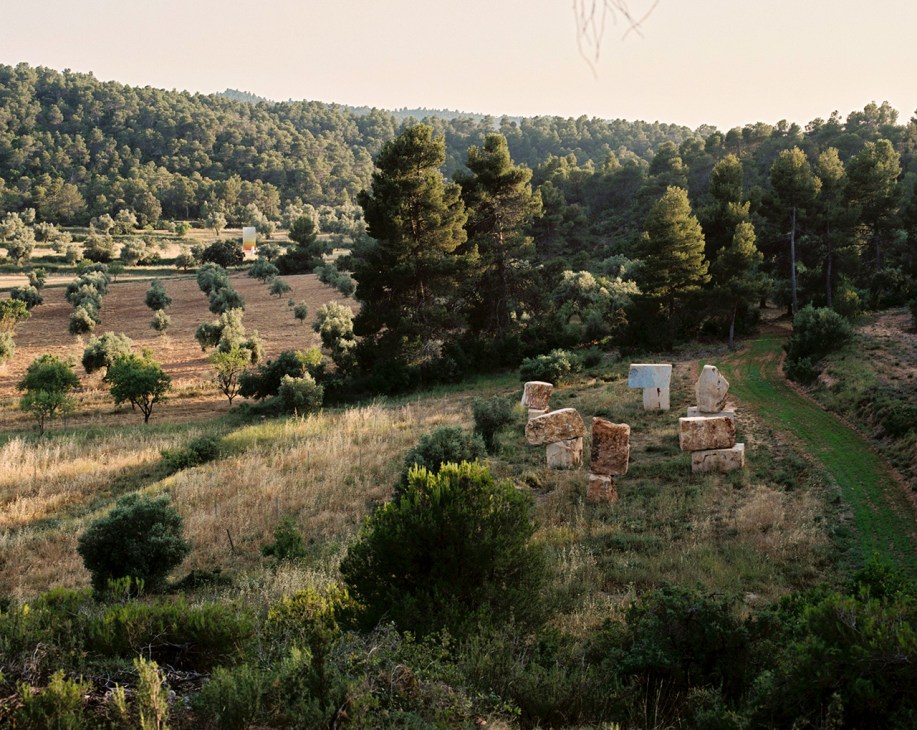
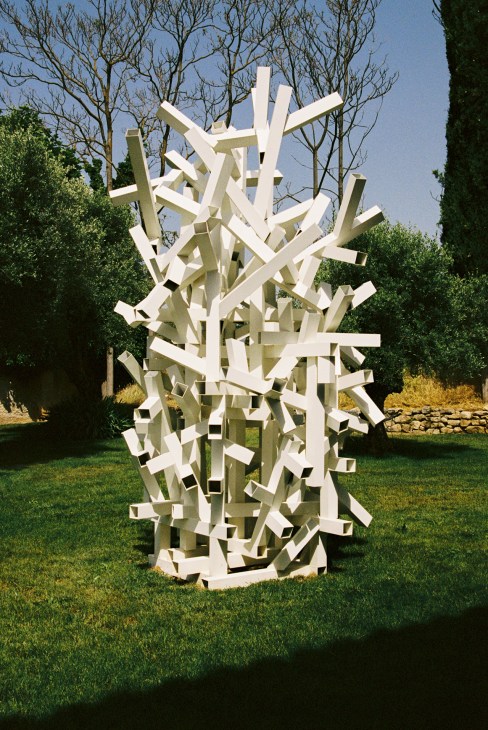
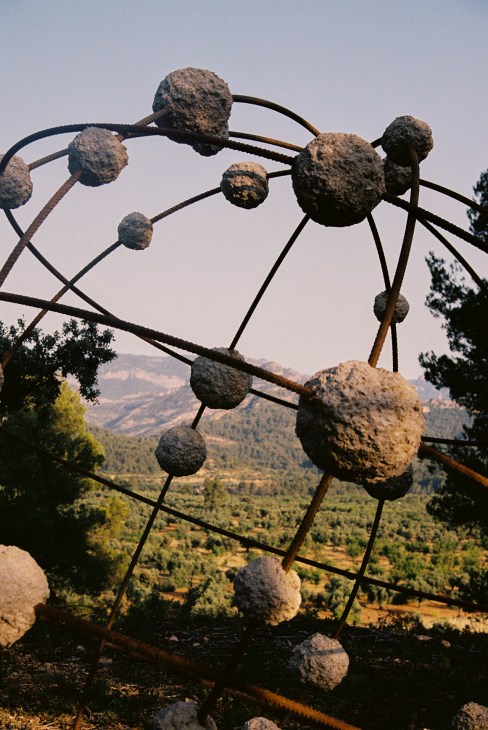
Crossing a stone bridge by Colombian artist Iván Argote, visitors discover a series of engraved miniature poems that point to the perils of polarisation and the urgency of reconciliation. They are an early indication that this sculpture park isn’t merely an exercise in spectacle. Bold statements about climate change are combined with the recurring theme of contemplation (several sculptures have invitations to sit) and there is a sense of playfulness and scale that isn’t always possible inside the white walls of a gallery.
Our guide, project director Julia Cajaraville, shows us “Orbital”, a metallic sphere that holds a constellation of concrete fragments, made by Lebanese artist Mona Hatoum. “It’s a timely piece about the globe’s constant, precarious state of creation and destruction,” says Cajaraville. “We collaborated with metalworkers from the neighbouring village to bring it to life. Many of the community’s artisans get excited when Christian turns up at their doors with an artist. They love the creative challenge.”
With no other major cultural institutions in the vicinity, there has been a concerted effort to invite school groups and other organisations – along with residents of the region – for an inspiring stroll here. An earlier iteration of the trail, which was inaugurated in 2019, linked the two houses but eventually became a sore point for rental guests, who complained about a lack of privacy. The next stage of the development was prompted when neighbours revealed that they wanted to let go of their 40-year‑old winery. Bourdais and Albarrán acquired it and then converted the vineyards and the centuries-old coach house into what became the foundation for a new open-air gallery.
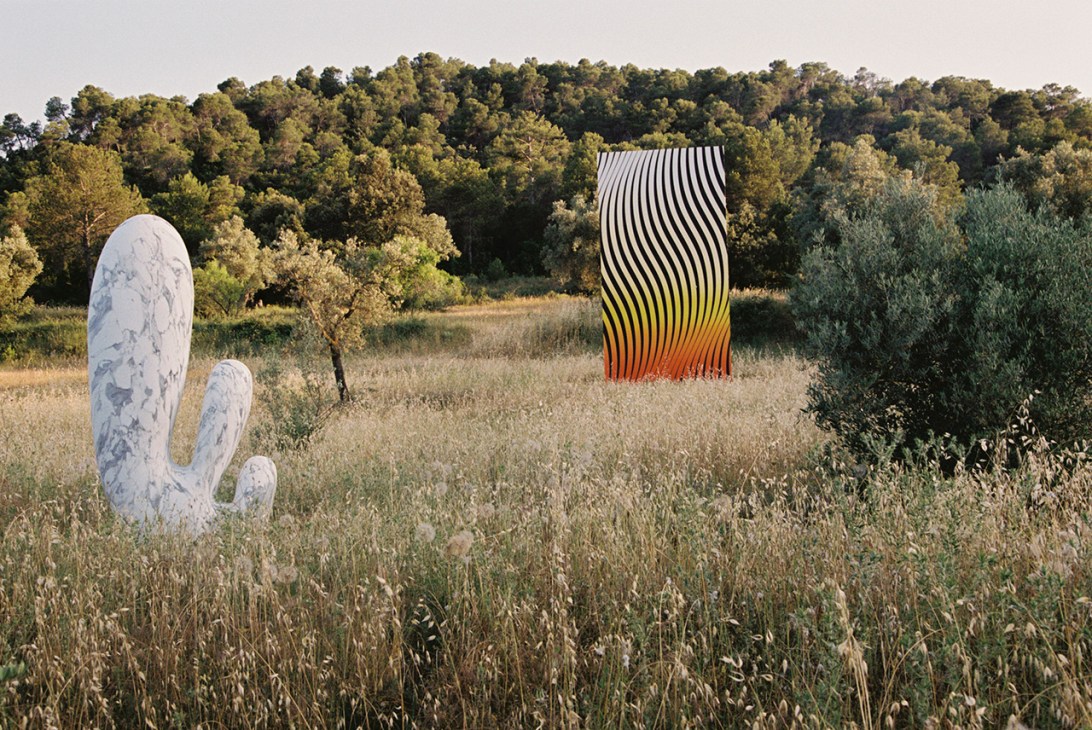
The walk leans into the wild side of the landscape and the path is marked only occasionally by wooden stakes, meaning that you often need to trust your intuition to find the way forward. This is all part of a minimal‑intervention approach that has preserved the pristine environment and helped to bring around many of the initially sceptical locals, as well as winning administrative approval for the next phase of the project. This will comprise a 25-pod eco-hotel that will include a permanent restaurant. The project is intended to round out Bourdais and Albarrán’s greater vision – the creation of a triptych of art, architecture and hospitality.
Standing on the site of the new hotel, which is earmarked to open in 2029, the view down into the valley can feel as though it has been plucked from the pages of a fantasy novel. The sandstone-coloured villages of Arnes and Horta de Sant Joan are draped across the rolling hills, while a volcanic-looking peak punctures the horizon. According to whispered local lore, the jagged mountain vistas inspired Picasso’s vision for cubism during a period in 1898 when he rested in the area while battling a stubborn respiratory illness.
A whole cast of other artists have followed in his footsteps, taking their cues from the untamed surroundings to slow down when it comes to their creative process. “The experience here is about cultivating a sense of openness,” says Bourdais. “It might sound ambitious but we want this vision to inspire other places around the world to reimagine the horizon.”
solo-houses.com






